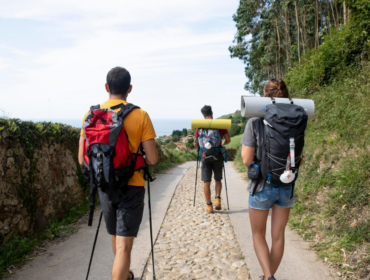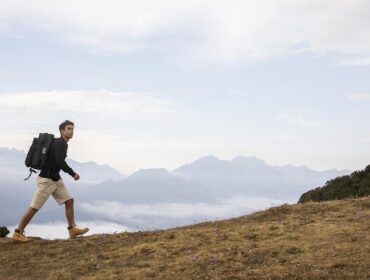You can imagine those treasured days: sunny, slightly breezy, a high of about 72 degrees, not a biting bug within a mile. But if you wait for that absolutely ideal weather before heading out, you’ll miss out on too many trips.
The good news is that with the right gear and a little know-how, tent camping in the rain can be a fun and memorable experience. Whether you’re a seasoned camper or a beginner, understanding the nuances of camping in the rain will help you embrace the adventure.
Introduction
You always want to pitch your tent on a flat surface, but that’s extra important in the rain because water will pool in any depressions (you don’t want to wake up in a puddle). Look for a campsite in a stand of trees for extra coverage if possible.
What to do when camping in the rain starts with being prepared. If it’s raining when you’re setting up camp, you can pitch a freestanding tent under the cover of trees, drape the fly over it, and move the whole setup to your campsite. Alternatively, rigging a tarp first allows you to set up your tent underneath, staying dry while setting the stage for camping in a tent in the rain.

Staying Dry with the Right Tent
It’s true that staying dry in a rainy campsite takes some skill—but then again, there’s nothing quite as soothing as the pitter-patter of raindrops on your tent. Any tent worth its salt will keep the rain out, but some shelters are better for wet conditions than others.
When it comes to tent camping in the rain, a double-wall tent is often the best choice. Its outer waterproof layer and breathable inner wall minimize condensation, ensuring comfort even in humid conditions.
Make sure you get a taut pitch on your tent to prevent the wet fabric from sagging. You may end up spending a lot of time in your tent, so you might as well make it comfy. Leave the minimalist shelter at home and spring for something with a little more space.
Consider sizing up—bringing a 3-person shelter for your 2-person crew, for example—to give yourself a little extra living space. A roomy vestibule will give you space to stash wet gear.
Double-Wall Tents
- Feature two layers: an outer fly and an inner wall.
- The outer fly is waterproof, designed to shield against rain and wet conditions.
- The inner wall is breathable, allowing for improved air circulation and reducing moisture build-up and condensation.
- Ideal for wet and humid environments where ventilation is crucial to staying comfortable.
- Provide better insulation compared to single-wall tents, making them suitable for a range of weather conditions, including cold and rainy climates.
- Typically heavier and take longer to set up compared to single-wall tents.
Single-Wall Tents
- Constructed with only one layer, combining waterproofing and breathability in a single fabric.
- Lightweight design makes them an excellent choice for backpackers prioritizing minimal weight.
- Easier and faster to set up, making them convenient for short trips or when setting up camp in a hurry.
- Best suited for dry or mildly wet conditions, as they are more prone to condensation due to limited ventilation.
- Not ideal for prolonged exposure to heavy rain or humid environments.
Adding a Tarp for Extra Protection
A tarp is an invaluable tool for camping in the rain. It provides a dry space for cooking, eating, or relaxing outside your tent. Pitch it as an A-frame for maximum coverage or as a lean-to for a more open setup. With a tarp overhead, you can even dry your wet clothes and gear, making tips for camping in the rain like this one essential for a smoother experience.
There are a couple of ways to set up a tarp. Pitch it like an A-frame (draped over a central line and staked down on both sides) for the most protection from the weather. Or rig it like a lean-to, with two corners tied off to trees or poles, for more room to move. Use the space to dry wet gear, cook, or hang out outside of your tent.
Waterproof Ratings and Materials
The right tent materials make all the difference when camping in a tent in the rain. Look for a tent with a high waterproof rating for both the fly and the floor. The floor should be especially durable, withstanding the pressure of movement and gear. This ensures that your tent remains a dry haven, even in heavy downpours.

Managing Condensation
One of the most overlooked challenges of camping in the rain is condensation. Closing all the tent’s doors and vents may seem like the best way to stay dry, but it often leads to trapped moisture inside. Opt for tents with good ventilation options, such as mesh panels and adjustable fly straps, to keep the interior comfortable while reducing dampness.
One tent can be set up outer fly first, then taking the inner inside and hooking it up into place. The other’s inner fly is set up first, then the fly is placed over the top and secured.
Get a tent that has enough ventilation options and use them … ventilation ports, mesh inner walls, doors that can be left slightly open from top or bottom, fly straps to adjust the gap between fly and ground. Read more about preventing condensation here.
Rain Gear and Apparel
Having the right rain gear is crucial when tent camping in the rain. A quality rain jacket, rain pants, and even a rain hat can keep you dry and comfortable, allowing you to enjoy activities outside your tent. For those camping in the rain with kids, bright, waterproof layers are not only practical but also fun for kids who love splashing around in puddles.
Wear Bright Colors:

Ditch Urban Colors:
- Avoid muted or camouflage patterns that blend into natural surroundings.
- Choose gear that combines functionality with safety—bright-colored parkas or jackets are excellent options.
Practical and Stylish:
- Bright orange or red parkas are not only functional but can add a pop of color to your outdoor wardrobe.
Layering for Wet Weather
When your clothes are soaked, it might be tempting to dump them in the corner and curl up in your sleeping bag. Instead, consider hanging any wet clothes first. You’ll thank us tomorrow when you have dry clothes that don’t smell like mildew.
Pack a clothesline and string it under a tarp or your tent’s vestibule so you can hang all your wet clothing to dry. Taking time to manage the moisture factor will make your trip a lot more pleasant.
Base Layers:
- Choose moisture-wicking, quick-drying fabrics like nylon or polyester.
- Avoid cotton, as it retains moisture and becomes heavy and cold when wet.
- Look for thermal base layers in colder conditions to maintain warmth.
Mid Layers:
- Add an insulating mid layer, such as a fleece or lightweight down jacket, for added warmth.
- Ensure it fits well without restricting movement.
Outer Layer (Rain Shell):
- Invest in a waterproof, breathable rain shell or rain jacket to protect against the elements.
- Look for features like pit zips or vents to regulate body temperature during high-intensity activities.
Adjust Layers as Needed:
- Remove a layer before engaging in strenuous activities like hiking uphill to avoid overheating.
- Add layers while resting or sitting around the campfire to retain warmth.
Dry Socks
Pack Extra Pairs:
- Always carry multiple pairs of socks to keep your feet dry and comfortable.
- Designate one pair for indoor tent use only to ensure you always have warm, dry socks at night.
Material Matters:
- Choose moisture-wicking materials such as merino wool or synthetic blends for durability and comfort.
- Avoid cotton socks, as they absorb moisture and dry slowly.
Emergency Sock Stash:
- Keep a spare pair of socks in your vehicle or backpack for emergencies.
- Fresh socks can prevent blisters and improve morale during a rainy camping trip.

Footwear for Wet Conditions
Walking around in the rain is its own kind of challenge. Trails will be muddy and slippery, so it’s critical that you wear shoes or boots with good traction, especially if you’re going to be doing any hiking in the rain.
Consider wearing rain pants or packing gaiters. Wet leaves and morning dew can get you wet in a hurry and even soak your pants clear through. Rain pants and gaiters can save the day. Leave those soggy old sneakers at home, and invest in a solid pair of hiking shoes that have advanced traction technology.
When selecting a pair of hiking shoes, look for options that are fully waterproof, breathable, and provide good tread. With the right shoes, you’ll be splashing in puddles like a gleeful child instead of slipping around on the ground.
Building a Fire in the Rain
A campfire can be the highlight of your trip, even when it’s wet outside. Knowing what to do when camping in the rain includes preparing for fire-building challenges. Bring waterproof matches or a lighter, extra firestarters, and, if possible, keep some dry firewood in your vehicle. Remember to stay safe and avoid lighting a fire under a tarp. However, remember that it’s always best to be responsible and buy firewood locally so you don’t risk bringing in invasive species via the wood.
Safety tip: when lighting your fire, don’t do it under a tarp – it may seem like a good idea, but it could melt or, worse, catch fire.
Final Thoughts
Camping in a tent in the rain may require some extra preparation, but with the right mindset and gear, it can be an adventure to remember. From setting up a tarp to layering effectively and keeping dry socks on hand, these tips for camping in the rain will help you stay comfortable and make the most of your rainy-day outing. Whether it’s the gentle sound of raindrops on your tent or the fun of jumping in puddles with your kids, camping in the rain offers unique joys that sunny days just can’t match.





